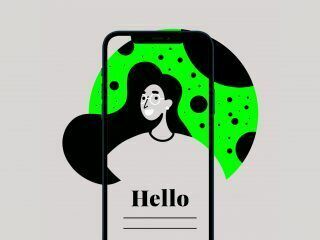Facebook killed website design.
There is so much accessibility, functionality, and easy-to-understand usability in Facebook that it rendered websites for brands a little bit obsolete. Virtually everything you can do on a brand’s webpage can be recreated, faster, on Facebook: there’s no need for a domain, no need to pay a web designer to design your page, and no need to encourage people to click four or five extra times to get what they need.
More importantly, that’s where the people are.
Facebook gives you a page.
You populate it with things for sale, brand values, and contact information.
Your audience, who is likely already on Facebook, takes it from there.
Easy.
However, as with most things during 2020, the pandemic brought Facebook’s physical limitations forward.
Brands sought out different platforms for virtual experiences that went beyond the function-first approach of Facebook and other socials.
Zoom. Hangouts. Houseparty.
The difficulties of hosting virtual events on an ephemeral platform are obvious. What people needed was different to a social media platform, or a way of communicating. They needed a whole world.
Enter, the website.
Websites: A Functional Explanation
In the absence of other things – going outside, meeting friends, travelling, anything that has to do with people – websites have stepped in to give people a taste of the possibilities of indoor experiences. Some websites have made themselves into virtual cities and stalls. Others are built around gamification. Even more others change frequently, not just the design, but also the functionality.
For people whose primary internet usage for the past seven years has been Facebook, the possibilities of websites has more than tripled what they can do on the internet. Not to mention, it’s also shown them something that is easily forgotten: the possibility of web design itself.
In the early days of web design, it was all about what you could do with this new technology. As we became more familiar with it, websites grew sleeker and more sparse. Doing things ‘just because’ gave way to doing things in a way that would maximise profitability.
The internet grew up.
Web Design 2021
And then COVID-19 happened.
Facebook and other socials started to struggle.
And the web slid back a few years.
Right now, we’re in the midst of a 90s resurgence. Nostalgia is a powerful incentive in any case, but coupled with what’s happening around us in 2021, no wonder people want escapism in any way they can find it.
Web is an excellent way to provide that escapism, and talk about your brand.
Why Web?
Web is really the only medium where brands can directly interact with their fans, and one of the only mediums where they can have a little fun. With a captive audience desperate for any sort of engagement, this is an excellent opportunity to capitalise on the current situation and create brand design that really stands out.
More importantly, that entertains and informs.
With websites, a key facet of design is that you need to reward people for taking the time to visit your web-page, particularly if there’s no reason for them to do so. Web allows an opportunity to engage with and explore the brand without the pressure to purchase, and the space to take in a different side of the brand.
Any side of the brand.
Web in 2021 is a blank slate. Everything else on the web is so structured – so Facebookized – that the slightest step out of the norm feels like a big luxury, something that comes around only rarely.
Tips for Web Design in 2021
- Maximise every aspect of the browser. From customised messages in the tabs to hidden links, good web design can create a miniature world on the web that allows deeper access to your brand than a Facebook page or a simple brand page.
- Experiment. With web design, nothing is forever unless you want it to be. Print campaigns and newspapers are permanent; web design is fluid, and can be done just ‘for fun’ without the risk that, ten years from now, it’ll be dated.
- React, interact, act. Websites allow you to use aspects of your brand voice that could go unheard in Facebook or a corporate website. Allowing your brand’s personality to shine through can help hold your audience’s attention. They’ll remember a fun web-page that they spent a few minutes on.
- Design to brand. Use hidden links and easter eggs if you have to, but bring your brand’s personality and voice forward through every part of the design.
This isn’t to say these are the only tips, or that Facebook cauterised web design.
It’s the opposite. In the 15 – 20 years of the internet, we’ve honed and created a way of displaying information and an easily-understood visual language that is almost universally recreated. Now that the mold has been set, it’s the perfect time to break it, stand out, and speak above the crowd.
What’s next for websites post-pandemic?
There are people who might say that the age of the website will end when lockdown does.
That isn’t strictly true.
While websites might experience a dip in their newfound popularity, they won’t go back to pre-pandemic levels if a website is done well. With web, there are no real limitations on what you can do.
Put simply:
You can sell a pair of shoes on Facebook.
But to make people drool over your shoes, allow them to try them on virtually, make shoe-shopping fun, you need a website. The web, as they say, is forever.




